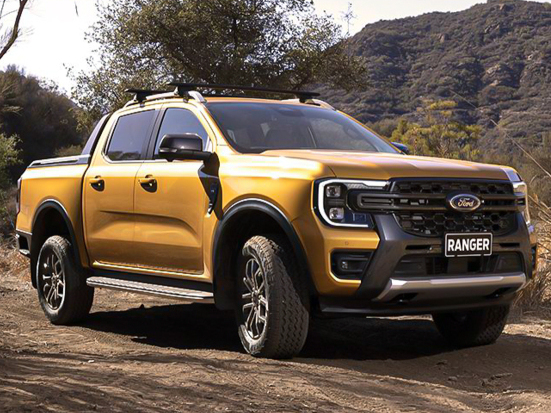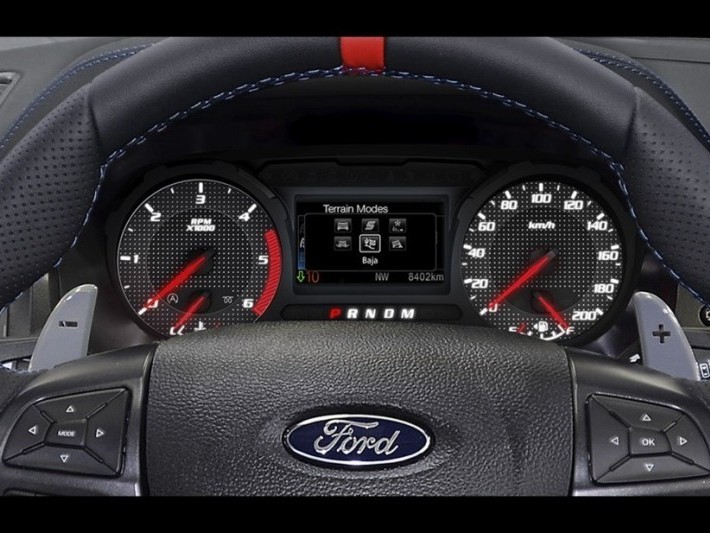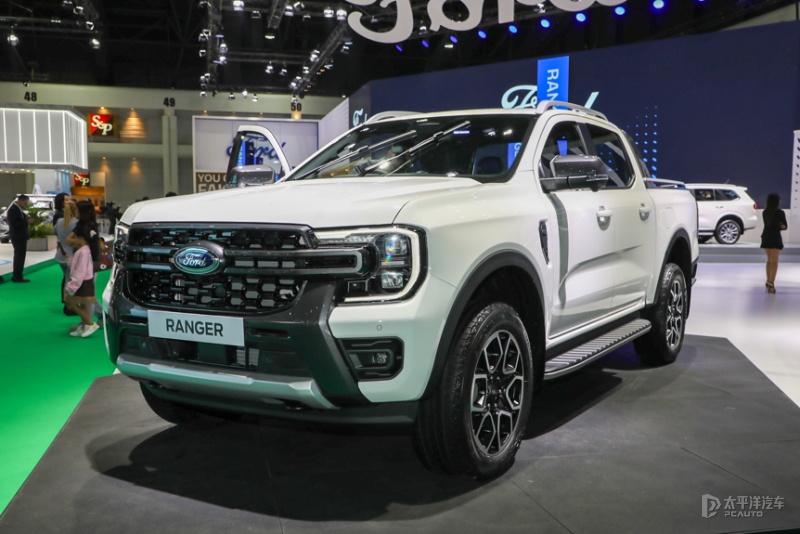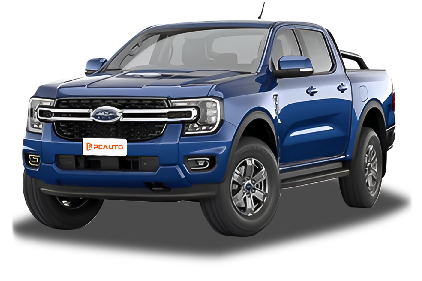Q
how to unlock ford ranger
If your Ford Ranger gets locked, the first thing to try is unlocking it with the original remote key fob—it’s the simplest and most straightforward method. If the remote isn’t responding, the battery might be dead; swap in a new one and give it another shot. Alternatively, you can use the mechanical key, which is usually hidden inside the remote. Just pull it out and insert it into the door lock cylinder to unlock manually.
If you’ve lost or damaged the keys, it’s best to reach out to a Ford authorized dealer or a professional locksmith. They can use your Vehicle Identification Number (VIN) to cut a new key or program a replacement remote. Avoid trying to force the door open yourself—you could end up damaging the door or the anti-theft system.
Also, keep in mind the Ranger comes with a pretty advanced security system. Multiple failed attempts to unlock it might trigger the alarm, so you’ll need to follow the steps in your owner’s manual to reset things. For those of us in Malaysia, the humid weather can take a toll on electronic components, so regularly checking the key battery and keeping the door locks maintained is a smart move. And don’t forget to stash a spare key somewhere safe for emergencies. If you run into trickier issues, like a faulty anti-theft system, heading to an official Ford service center is the way to go to keep your truck secure and running smoothly.
Special Disclaimer: This content is published by users and does not represent the views or position of PCauto.
Related Q&A
Q
What is the resale value of a 2022 Ford Ranger?
The used value of a 2022 Ford Ranger depends on several factors—new car pricing, condition, mileage, trim level, and market demand all play a role in resale value. Currently, pre-owned models retain roughly 70% to 85% of their original price, depending on maintenance history and overall shape. Higher-spec Wildtrak versions typically hold their value better.
Thanks to its dependable performance, practical cargo space, and strong off-road features, this pickup maintains steady demand in the used market, especially diesel-powered variants. Well-maintained, accident-free examples with full service records fetch stronger offers, while modified trucks might turn off some buyers.
If you're thinking of selling, it’s worth getting quotes from multiple dealers or online platforms and checking listings for comparable models to gauge a realistic price range. Keep in mind that pickups generally depreciate slower than sedans, though shifting regulations and economic conditions can still impact resale value.
Q
How much is a 2022 Ford Ranger?
Here’s a natural, human-sounding translation for an automotive editor:
---
**2022 Ford Ranger Pricing Overview**
The 2022 Ford Ranger’s price varies by trim and configuration, with a starting range of roughly RM 98,000 to RM 145,000. Final pricing depends on your choice of powertrain (like the 2.0L turbo-diesel or 3.2L five-cylinder diesel) and trim level (XL, XLT, or Wildtrak). Known for its rugged chassis and off-road capability, the Ranger also packs modern tech—think SYNC® infotainment and advanced driver aids.
A quick note: Used prices fluctuate based on mileage, condition, and remaining warranty, so always check official channels or dealers for the latest quotes. As a top contender in the midsize pickup segment, the Ranger balances daily driving with workhorse utility. Cross-shop rivals like the Toyota Hilux or Isuzu D-Max if you’re weighing options.
---
This version keeps the info clear and engaging while sounding like a real editor wrote it—no robotic tone. Let me know if you'd tweak any phrasing!
Q
What Ford engines are being recalled in 2022?
Ford issued a global recall in 2022 for certain vehicles equipped with the 2.7L EcoBoost V6 engine, including popular models like the F-150 pickup and Edge SUV. The action addresses a potential design flaw in the engine's oil separator that could lead to leaks and increased fire risk.
This proactive recall reflects Ford's commitment to addressing safety concerns before they become problems. Owners can check if their vehicle is affected through Ford's official channels and visit authorized dealers for complimentary repairs.
For drivers of these models, it's smart to regularly check oil levels and inspect the engine bay—catching issues early is always better. While recalls might sound alarming, modern automakers have robust systems in place to protect customers. The key is to act promptly when notified.
To keep your engine running smoothly long-term, stick to Ford's recommended maintenance schedule and use approved oil grades. And hey, keeping detailed service records never hurts—it’s your proof of proper care down the road.
Q
Are there any problems with the 2022 Ford Ranger?
The 2022 Ford Ranger proves to be a dependable midsize pickup overall, though some owners have reported typical niggles. The infotainment system occasionally acts up with lagging or delayed responses – something that tends to improve with subsequent software updates. A handful of drivers also mention slightly jerky transmission shifts at low speeds, though this usually smooths out once you adapt to the driving mode.
Where the Ranger really shines is its rock-solid 2.0L turbo-diesel engine, which delivers consistent performance and decent fuel efficiency, making it great for long hauls or hauling loads. Just remember: staying on top of maintenance is key, especially for diesel models – don’t skip those fuel filter changes and keep an eye on the DPF system.
If you’re eyeing a used 2022 Ranger, pay extra attention to the undercarriage for signs of heavy use, since pickups often handle tough workloads. That said, this truck holds up well for durability and off-road capability. Most quirks are minor and don’t get in the way of daily driving, plus dealerships usually have fixes on hand.
Q
What is the warranty on a 2022 Ford Ranger?
The 2022 Ford Ranger comes with a standard 3-year/100,000-km warranty (whichever comes first), covering manufacturing defects and material quality issues. The powertrain is backed by a 5-year/160,000-km warranty (whichever occurs first), including core components like the engine, transmission, and drivetrain. Additionally, Ford provides a 6-year unlimited-mileage corrosion perforation warranty.
Keep in mind that warranty terms may vary depending on trim levels or promotional offers, so it’s best to check with your dealer for the latest details before purchasing. For pickup trucks, these coverage periods are fairly typical—especially the extended powertrain warranty, which often outlasts those on passenger cars, reflecting the manufacturer’s confidence in durability.
If you frequently use the Ranger for heavy-duty work or off-roading, pay extra attention to the coverage for the drivetrain and underbody components. Also, remember that sticking to scheduled maintenance at authorized service centers is crucial to keeping your warranty valid. Using aftermarket parts or skipping recommended services could void your coverage.
Q
How many miles will a 2022 Ford Ranger last?
The 2022 Ford Ranger is built to last between 200,000 to 300,000 miles (roughly 320,000 to 480,000 kilometers) with proper care and regular maintenance—though actual lifespan depends on driving habits, road conditions, and service frequency. This truck’s tough chassis and proven powertrains, especially the 2.0L EcoBlue and 3.2L Duratorq diesel engines, handle daily city and rural driving with ease. Staying on top of critical maintenance like oil changes, filter replacements, and transmission fluid services goes a long way in keeping it running.
Keep in mind: Rangers are designed for heavy-duty work, so their suspension and underbody components typically outlast regular passenger cars. If you frequently haul loads or go off-road, consider shortening service intervals and inspecting the undercarriage regularly. Don’t overlook electronics either—modern sensors and control modules play a big role in long-term reliability. Always opt for genuine parts and certified technicians to preserve the truck’s condition.
Bottom line? The Ranger sits above average in its class for durability. With proper upkeep, it’s easily a 15-year truck.
Q
Is there a recall on the 2022 Ford Ranger?
Based on current information, the 2022 Ford Ranger did undergo recalls in certain global markets for specific issues—primarily involving potential seatbelt pretensioner faults and loose rear axle bolts, which posed safety concerns. Owners can check their vehicle’s recall status by entering the VIN on Ford’s official website. We recommend staying updated through local dealer notifications or official channels to ensure your truck meets safety standards.
Keep in mind that recalls are standard manufacturer measures to address potential issues—not necessarily indicators of poor quality. They demonstrate proactive responsibility by offering free repairs.
For more details on Ranger maintenance—like diesel engine service intervals or 4WD system care—reach out to an authorized service center. They’ll provide tailored advice to keep your rig running smoothly.
Q
What are common problems with the 2022 Ranger?
**2022 Ranger Common Issues (From an Auto Editor's Perspective)**
As one of the hottest pickups in its class, the 2022 Ranger does have a few common quirks worth noting. Some owners report occasional infotainment glitches—freezing or black screens—but a software update usually sorts it out. The transmission can feel a bit jerky at low speeds, which isn’t uncommon for trucks in this segment. Just keep an eye on the fluid condition during routine maintenance.
The high-strength steel body boosts safety, but you might notice faint creaks around some panel gaps, especially on rough roads. Also, if you’re frequently towing heavy loads, keep a closer check on the turbocharged engine’s cooling system—shortening the coolant replacement interval helps.
The rear leaf springs? Great for payloads, but empty rides get bouncy. That’s just physics, not a defect. Bottom line: None of these are dealbreakers, and most fixes are a quick dealer visit away. Stick to the service schedule, keep the software updated, and you’ll dodge 90% of these minor headaches.
Q
What is the fuel economy of the Ford Ranger 2022?
The 2022 Ford Ranger's fuel efficiency varies depending on configuration and driving conditions. Models equipped with the 2.0L turbo-diesel engine average around 7.6L/100km combined, while the 3.0L V6 turbo-diesel version is slightly thirstier at approximately 8.5L/100km. Real-world figures may differ based on payload, terrain, and driving style.
Diesel engines deliver strong low-end torque, making them ideal for towing or long-distance cruising. With diesel fuel typically being cheaper at the pump, running costs can be lower over time. For city driving, keep an eye on the auto start-stop system—it helps cut down on idle fuel consumption. Regular maintenance, like air filter replacements and using the right engine oil, also plays a role in keeping efficiency optimal.
As a pickup that balances utility and performance, the Ranger's fuel economy sits mid-pack among rivals. It’s a solid choice if you need a versatile workhorse without breaking the bank at the fuel station.
Q
What engine is in a 2022 Ford Ranger?
The 2022 Ford Ranger offers a range of engine options to suit different needs. The workhorse is the 2.0L EcoBlue four-cylinder turbo-diesel, available in single-turbo (170hp/405Nm) and bi-turbo (213hp/500Nm) variants. Featuring high-pressure common rail injection, this mill delivers low-rev grunt and fuel efficiency – perfect for hauling or towing.
Some markets also get the 2.3L EcoBoost petrol engine (270hp/420Nm) with twin-scroll turbo and direct injection, catering to drivers who prioritize throttle response. All engines pair with a 10-speed auto box featuring an electronic rotary shifter and drive mode selector.
Heads-up for diesel buyers: The selective catalytic reduction (SCR) system requires periodic AdBlue top-ups to cut NOx emissions – standard stuff for modern diesels. If you regularly tackle long hauls or heavy loads, the bi-turbo diesel's 500Nm punch (available from just 1,800rpm) makes it the smart pick, especially for mountainous terrain or hot climate operation.
Popular Cars
Model Year
Car Compare
Car Photo
Latest Q&A
Q
What is the most powerful 1.6 litre engine?
One of the most potent 1.6-liter engines on the market is the turbocharged four-cylinder you’ll find in certain high-performance models. Take the track-tuned variants, for example—they’re pushing over 300 horsepower. These engines typically pack direct injection, high-boost turbos, and lightweight materials to maximize performance without sacrificing fuel efficiency.
In more mainstream sporty models, 1.6T units can still deliver around 200 hp, with tech like variable valve timing and twin-scroll turbos improving low-end torque. That said, high-output small-displacement engines demand robust cooling and durability, so stick to regular maintenance and use the right spec oil.
If you’re eyeing mods, a 1.6T with a cast-iron block usually handles big power upgrades better than aluminum-block engines—just watch out for local emissions and noise regulations.
Q
What is 454 in liters?
The conversion of 454 cubic inches to liters is approximately 7.4 liters, which is a commonly used volumetric unit to describe large displacement engines, especially in American muscle cars or classic old cars. For example, some V8 engines in Chevrolet use this displacement. This type of large displacement engine typically provides ample low-speed torque, making it suitable for car owners who pursue acceleration performance and rich sound waves. However, the fuel consumption is relatively high, and the daily use cost will increase. With the popularization of turbocharging technology nowadays, small displacement engines can also achieve power output close to large displacement through turbocharging, while also having better fuel economy. This is also why large displacement naturally aspirated engines are gradually decreasing in the market. However, for enthusiasts who enjoy traditional American muscle cars or classic car modification culture, large displacement engines still have their unique charm, and it is difficult to completely replace both the sound wave and the linear feeling of power output.
Q
What is a 440 engine in liters?
The term "440 engine" typically refers to Chrysler's legendary 7.2-liter V8 powerhouse. This big-block mill dominated the muscle car and full-size sedan scene during the 1960s and '70s, famous for its tire-shredding low-end torque and that signature rumbling exhaust note. For those keeping metric scorecards, 440 cubic inches translates to roughly 7.2 liters of displacement - pure American muscle at its finest. You'd find these beasts under the hood of icons like the Dodge Charger and Plymouth Road Runner.
While modern engines chase fuel efficiency, there's still a cult following for these old-school naturally aspirated monsters. They deliver that addictive linear powerband and mechanical symphony no turbocharged four-banger can match. But here's the kicker - displacement isn't everything. Factors like bore/stroke ratio, compression, and airflow tuning mean today's tiny turbo engines can sometimes punch way above their weight class. Still, nothing replicates the visceral thrill of twisting that 440's throttle and feeling seven liters of Detroit iron come alive.
Q
What does 4.5 liter engine mean?
A 4.5-liter engine refers to a total displacement of 4.5 liters, meaning all its cylinders combine for a total working volume of 4,500 cubic centimeters. Generally, a larger displacement translates to stronger power output—more air and fuel can be drawn in each combustion cycle, generating greater horsepower and torque.
You’ll typically find these big-displacement engines in high-performance cars, luxury vehicles, or full-size SUVs, where they deliver ample power and smoother driving dynamics. The trade-off? Higher fuel consumption, which can mean steeper running costs, especially in regions with expensive gas. Maintenance also tends to be pricier, since they require more oil and more complex servicing.
With tightening emissions regulations, many automakers are shifting toward smaller turbocharged or hybrid setups that offer similar power with better efficiency. But for driving purists, nothing quite matches the linear power delivery and throaty roar of a big, naturally aspirated engine. It’s an experience that’s hard to replicate.
Q
What is a 1.6 L I4?
The 1.6L I4 refers to a 1.6-liter inline-four engine, where "L" stands for liters (a unit of volume) and "I4" indicates an inline-four layout—one of the most common engine configurations in family cars today. It strikes a solid balance between power output, fuel efficiency, and production costs, making it ideal for daily commuting and family use. You’ll find this setup everywhere, from Japanese and German models to domestic brands.
A naturally aspirated 1.6L typically delivers around 120 to 150 horsepower, while turbocharged versions (like the 1.6T) push performance further. The inline-four design is compact, easy to maintain, and smooth-running, which works great for front-wheel-drive layouts. For buyers on a budget who still want reliable power, the 1.6L I4 is a no-nonsense pick. Plus, it’s got decent tuning potential—enthusiasts often tweak the intake/exhaust or remap the ECU for extra kick.
View MoreRelated News

2025 Ford Ranger WildTrak launched, the most powerful diesel version in the Ranger lineup
MichaelAug 25, 2025

Is the Ford Ranger V6 about to enter Malaysia?
LienAug 13, 2025

Reviewing the Ford Ranger: The Dual Advantages of Rugged Appearance and Powerful Performance
Kevin WongApr 21, 2025

"Starting from RM 170,888! Detailed Explanation of Ford Ranger's Configuration and Performance, a Synonym for Practicality and Versatility?"
AshleySep 20, 2024

Ford Ranger: A Safe, Reliable, and Economical Choice of Pickup
LienMay 2, 2024
View More
















Pros
Cons